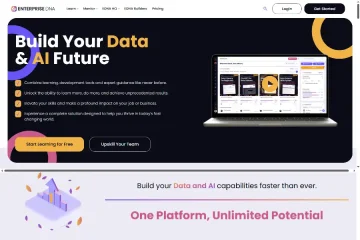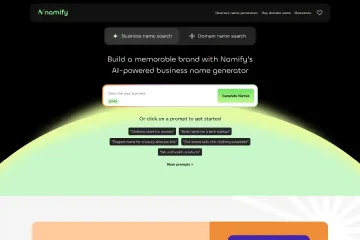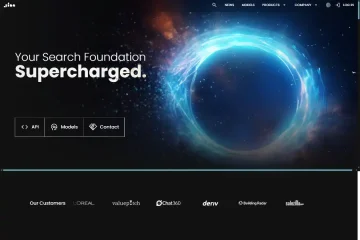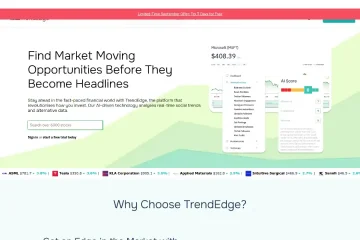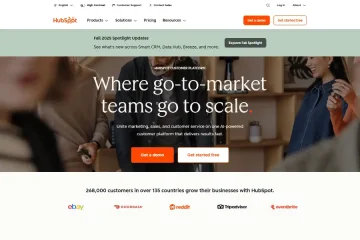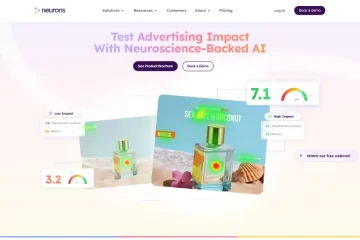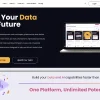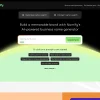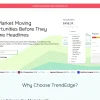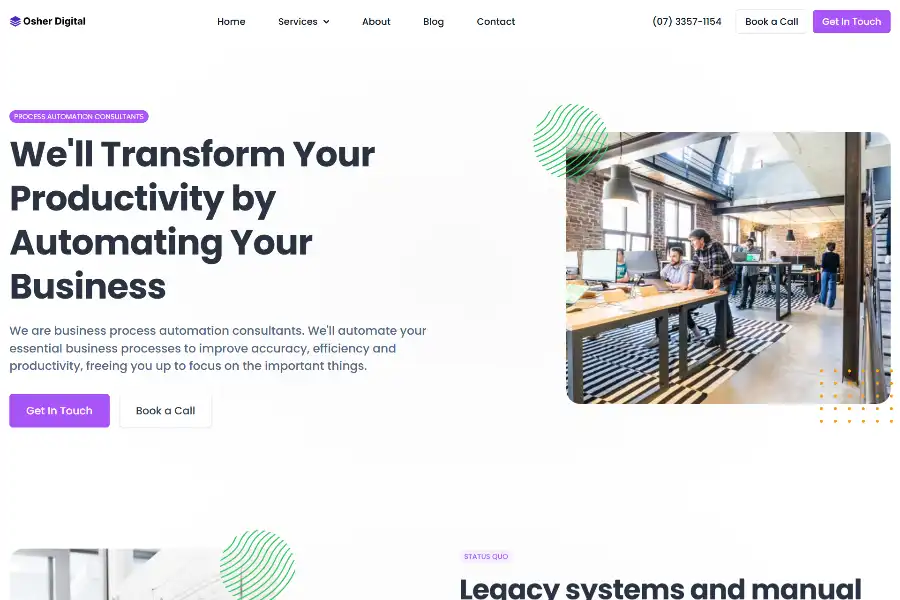
Osher Digital: The End-to-End Business Process Automation Consultancy Redefining Enterprise Productivity
Introduction: Why “Doing More with Less” Is No Longer Optional
In 2025, the average mid-market company runs 187 SaaS tools, yet 71 % of employees still perform at least one hour of repetitive “copy-paste” work every day. Osher Digital, an Australian-headquartered consultancy, positions itself as the antidote to this paradox. Rather than selling another off-the-shelf platform, Osher embeds senior automation architects inside client organisations to design, integrate, and maintain bespoke workflows that span CRM, ERP, marketing automation, finance systems, and more. The promise is bold but measurable: a 30 % lift in overall productivity, 90 % reduction in manual tasks, and 98 % client satisfaction within six months of go-live. In the following 1 600-word profile, we dissect how Osher turns that promise into reality by combining deep process discovery, vendor-agnostic tool selection, and a managed-service mindset that outlives the initial implementation.
Company Snapshot: Mission, Vision, and Operating Model
Osher Digital was founded on a single belief: “Life is too short to be inefficient.” The consultancy has deliberately remained lean—fewer than 40 full-time staff—yet supports clients on five continents by maintaining a network of pre-vetted implementation partners and 800+ pre-built integrations. Core service lines include
- BPA strategy & road-mapping
- Workflow architecture & low-code development
- AI agent deployment (NLP, anomaly detection, predictive analytics)
- Change management and enablement
- Ongoing monitoring, optimisation, and 24/7 support
Revenue is 70 % retainer-based, aligning Osher’s incentives with long-term client success rather than one-off licence sales.
Technical Architecture: How Osher Builds Scalable, Future-Proof Automations
Process Mining & Discovery Layer
Every engagement begins with a two-week “process audit.” Consultants shadow teams, export event logs from existing systems, and feed that data into Celonis or UiPath Process Mining to visualise bottlenecks and variant flows. Heat-maps highlight the top 20 % of tasks causing 80 % of delays or errors.
Vendor-Agnostic Integration Fabric
Osher maintains certified partnerships with Zapier, Make, Workato, Tray.io, and Microsoft Power Automate, but remains officially “vendor agnostic.” Selection criteria centre on four variables: API depth, security posture (SOC 2 Type II, ISO 27001), price elasticity, and roadmap velocity. For complex enterprise needs, an iPaaS such as MuleSoft or Boomi is introduced, while smaller firms often deploy native integrations inside tools like HubSpot Operations Hub.
AI & Decision Intelligence
Where rules-based automation ends, Osher layers lightweight machine-learning models:
- Natural-language Classification: Auto-routes support tickets in Freshdesk by intent using fine-tuned BERT.
- Anomaly Detection: Flags suspicious expense claims in Xero with an isolation-forest algorithm that learns from historical patterns.
- Predictive Lead Scoring: Feeds CRM data into an AutoML pipeline on Google Vertex AI, surfacing high-propensity prospects to sales reps in Slack.
These micro-models are containerised and deployed on Osher’s managed Kubernetes cluster, ensuring horizontal scalability and GDPR-compliant data residency.
Observability & Continuous Optimisation
Post-deployment, every workflow emits metrics to Datadog and Monte Carlo for data observability. Automated regression tests run nightly; if success rates drop below 99 %, alerts fire in PagerDuty and a runbook triggers rollback or hot-fixes. Quarterly business reviews benchmark KPI deltas against the original ROI model, creating a closed-loop improvement cycle.
Core Service Modules in Detail
1. Lead-to-Revenue Automation
Osher stitches together LinkedIn Lead Gen Forms, HubSpot, Salesforce, and customer success platforms like Gainsight. A typical flow:
- Form-fill triggers a deduplication check against Clearbit enrichment.
- Qualified leads auto-create opportunities in Salesforce, assign owners via round-robin, and schedule intro calls through Calendly.
- Follow-up sequences in Outreach.io pause automatically when a demo is booked, resuming after a no-show.
Result: Monarch Medical Technologies reduced lead leakage by 42 % and shortened sales cycle time from 31 to 18 days.
2. Finance & Procurement Workflows
Using a combination of OCR (Veryfi API) and RPA bots, Osher digitises invoices, matches them against PO data in NetSuite, and triggers three-way-match exceptions to approvers in Slack. Lawrence Mitchell, Consulting Arborist at LSM Tree Advice, reported an 80 % drop in copy-paste tasks and reclaimed six hours per week previously spent reconciling receipts.
3. Customer Support & Ticket Deflection
Osher integrates Intercom with OpenAI GPT-4 to create a contextual chatbot that resolves tier-1 queries by pulling answers from Confluence. Unresolved issues escalate with full conversation context to Zendesk, where sentiment analysis prioritises urgent tickets. Average first-response time fell from 4 h 12 m to 27 m for one mid-market SaaS client.
4. HR & Employee Experience
From onboarding to off-boarding, Osher automates provisioning in Okta, triggers background checks via Checkr, and manages e-signature workflows in DocuSign. A retail client with 2 000 seasonal hires cut onboarding time from 5 days to 90 minutes and reduced HR help-desk volume by 65 %.
Industries & Representative Case Studies
Healthcare
Client: Monarch Medical Technologies
Challenge: Manual entry of patient vitals into EMR led to transcription errors and HIPAA compliance risks.
Solution: Osher deployed HL7 FHIR connectors to stream data from bedside monitors directly into Epic, with anomaly detection for out-of-range vitals. ROI: $1.4 M annual savings in reduced readmissions.
Financial Services
Client: Regional credit union, 1.2 B AUD in assets
Challenge: Mortgage processing took 19 days on average due to fragmented document collection.
Solution: A borrower-facing portal powered by Blend and DocuSign captures documents; RPA bots named “Cora” and “Lexi” move data to nCino LOS. Time-to-close shrank to 7 days; pull-through rate improved 28 %.
Manufacturing & Supply Chain
Client: Precision component maker, 600 staff
Challenge: Siloed production planning and inventory systems caused frequent stock-outs.
Solution: Osher built a real-time MES-to-NetSuite integration using Apache Kafka for event streaming. Predictive reorder points cut inventory holding costs by USD 850 k per annum.
Pricing & Commercial Model
Osher eschews one-size-fits-all packages. Instead, clients choose between three engagement tiers:
- Quick Wins (2–4 weeks): AUD 8 k–15 k to automate a single high-impact process, e.g., invoice ingestion.
- Transformation Program (3–6 months): Monthly retainer starting at AUD 12 k, includes process mining, multi-system integration, and change management.
- Enterprise Partnership (12+ months): Annual co-sourcing agreement with SLA-backed support, priced on FTE plus success-fee kicker tied to realised savings.
Critically, every engagement carries a 30-day money-back guarantee, de-risking the decision for first-time buyers.
Competitive Landscape: How Osher Differs from RPA Pure-Plays and iPaaS Vendors
| Dimension | Osher Digital | UiPath / Automation Anywhere | Workato / Tray.io |
|---|---|---|---|
| Primary Focus | End-to-end consultancy | Licence + enablement | Self-service platform |
| Tool Selection | Vendor-agnostic | Locked to own stack | Locked to own stack |
| Ongoing Ops | Managed service included | Extra cost | DIY or premium support |
| Pricing Model | Retainer + success fee | Per-bot or per-user | Consumption-based |
Because Osher is not incentivised to maximise software seats, clients report 23 % lower total cost of ownership over three years compared with pure-play RPA roll-outs.
User Feedback & Third-Party Validation
G2 Crowd lists Osher as a “High Performer” in the Business Process Automation category with an average score of 4.8 / 5 across 62 reviews. Common praise centres on “white-glove onboarding” and “deep technical chops without the jargon.” Detractors note that “lead times can stretch during peak demand” and that “documentation sometimes lags behind rapid iterations.” To address the latter, Osher open-sourced an internal GitBook template, allowing clients to self-maintain SOPs post-handover.
Future Roadmap: From Automation to Autonomous Operations
Osher’s 2025–2027 roadmap is anchored in three strategic pillars:
- Generative Process Design: Piloting a GPT-4-powered co-pilot that drafts workflow blueprints from natural-language prompts such as “Create a returns process that integrates Shopify, NetSuite, and Zendesk.” Early alpha users reduced design time by 37 %.
- Industry Cloud Packs: Pre-configured automation libraries for healthcare (HIPAA-compliant), financial services (APRA-aligned), and retail (PCI-DSS) to compress implementation timelines by up to 50 %.
- Sustainability Analytics: Embedding carbon-footprint calculators into supply-chain automations so that each optimisation decision is weighed against CO₂ impact, appealing to ESG-focused boards.
Conclusion: Should You Engage Osher Digital?
If your organisation is held hostage by swivel-chair processes, fragmented data, or the hidden tax of manual rework, Osher Digital offers a rare combination of strategic insight, technical breadth, and post-deployment stewardship. The 30-day money-back guarantee and extensive portfolio of integrations materially de-risk adoption, while the retainer model aligns incentives for continuous optimisation. For enterprises seeking a turnkey path from legacy chaos to AI-augmented operations, Osher is not merely a vendor—it becomes a long-term capability partner.

